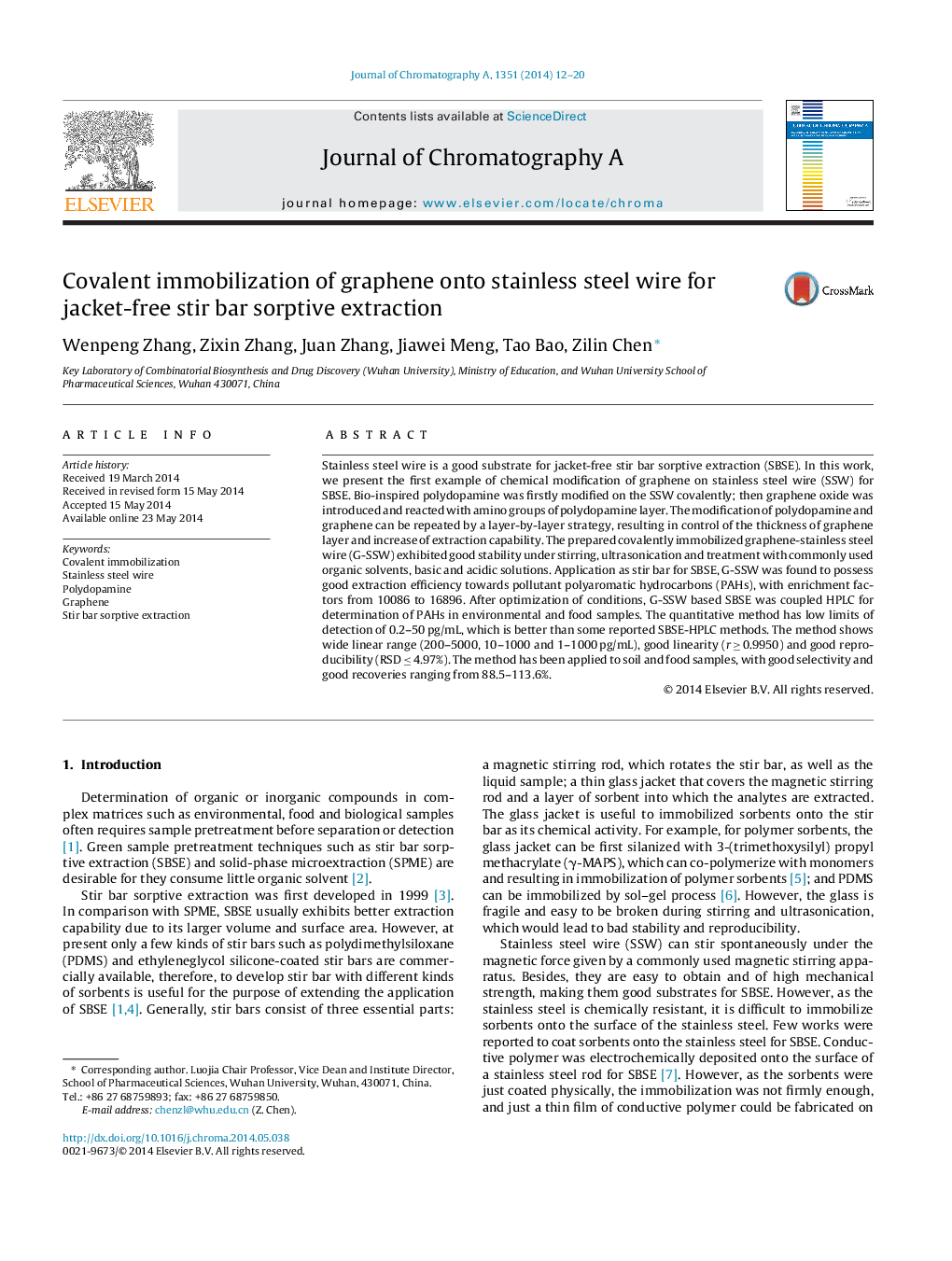| کد مقاله | کد نشریه | سال انتشار | مقاله انگلیسی | نسخه تمام متن |
|---|---|---|---|---|
| 1199811 | 1493575 | 2014 | 9 صفحه PDF | دانلود رایگان |
• A novel strategy for covalent immobilization of the sorbent onto stainless steel for SBSE.
• The stability of the sorbent was improved by covalent immobilization.
• The thickness of the immobilized graphene layer was controllable by layer-by-layer strategy.
• G-SSW showed high enrichment efficiency towards PAHs.
• G-SSW showed good clean-up efficiency in soil and food samples.
Stainless steel wire is a good substrate for jacket-free stir bar sorptive extraction (SBSE). In this work, we present the first example of chemical modification of graphene on stainless steel wire (SSW) for SBSE. Bio-inspired polydopamine was firstly modified on the SSW covalently; then graphene oxide was introduced and reacted with amino groups of polydopamine layer. The modification of polydopamine and graphene can be repeated by a layer-by-layer strategy, resulting in control of the thickness of graphene layer and increase of extraction capability. The prepared covalently immobilized graphene-stainless steel wire (G-SSW) exhibited good stability under stirring, ultrasonication and treatment with commonly used organic solvents, basic and acidic solutions. Application as stir bar for SBSE, G-SSW was found to possess good extraction efficiency towards pollutant polyaromatic hydrocarbons (PAHs), with enrichment factors from 10086 to 16896. After optimization of conditions, G-SSW based SBSE was coupled HPLC for determination of PAHs in environmental and food samples. The quantitative method has low limits of detection of 0.2–50 pg/mL, which is better than some reported SBSE-HPLC methods. The method shows wide linear range (200–5000, 10–1000 and 1–1000 pg/mL), good linearity (r ≥ 0.9950) and good reproducibility (RSD ≤ 4.97%). The method has been applied to soil and food samples, with good selectivity and good recoveries ranging from 88.5–113.6%.
Journal: Journal of Chromatography A - Volume 1351, 18 July 2014, Pages 12–20
